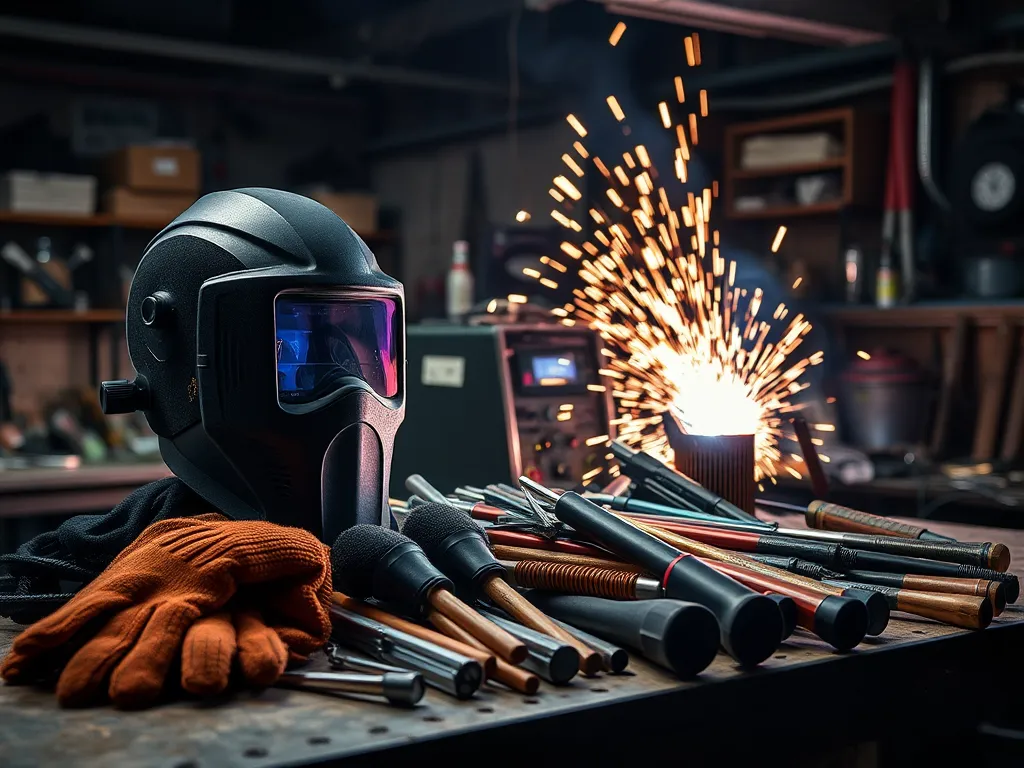Essential Welder Tips & Tricks for Every Skill Level

Welder Tips & Tricks for Successful Welding
Welding is a crucial skill in various industries, from construction to manufacturing. Whether you're a professional welder or a hobbyist, utilizing effective welder tips & tricks can significantly improve your welding outcomes. This article explores essential techniques, equipment maintenance, safety practices, troubleshooting methods, and skill enhancement strategies that every welder should know.
For anyone eager to enhance their skills, discovering effective welder tips can significantly improve your craftsmanship.
When it comes to achieving the best results in welding, understanding different welding techniques plays a pivotal role. From MIG to TIG and stick welding, each method has its nuances. Applying welder tips & tricks related to these techniques can help you select the right process for each task, ensuring stronger and more efficient welds. By mastering these techniques, you can enhance your productivity and produce high-quality work.
Proper equipment maintenance is vital for any welder, as it not only ensures safety but also prolongs the lifespan of your tools. Implementing welder tips & tricks focused on regular equipment checks, cleaning, and upkeep will improve your welding performance. Regularly maintaining welding helmets, machinery, and other gear will ultimately save you time and money in the long run.
Safety is paramount in the welding profession. Understanding and implementing safety practices is among the most essential welder tips & tricks. This includes proper safety gear, fire measures, ventilation, and emergency procedures. By prioritizing safety, you not only protect yourself but also create a safer work environment for your colleagues and clients.
Taking the first steps in welding involves understanding basic concepts and safety measures.
Finally, continuous skill improvement is crucial in the ever-evolving field of welding. Engaging with the latest techniques, participating in training courses, and collaborating with other welders are effective welder tips & tricks. These practices will not only enhance your skillset but also keep you updated on industry trends, allowing you to thrive in your welding career.
Welding Techniques
MIG welding (Metal Inert Gas) is one of the most popular welding methods, known for its speed and versatility. A significant tip is to adjust the wire speed and voltage according to the thickness of the material being welded. Additionally, maintaining a proper angle and distance between the gun and workpiece can enhance the quality of the weld.
TIG (Tungsten Inert Gas) welding is preferred for its precision and control. One of the key tips here is to practice the correct torch movement. A steady hand and a consistent speed while moving the torch, coupled with accurate filler rod feeding, can lead to high-quality, strong welds.
Stick welding, or SMAW (Shielded Metal Arc Welding), is often favored for its simplicity and portability. A good practice is to keep the electrode at the correct angle and distance from the workpiece to avoid common issues such as arc blow or undercut. Regularly replacing worn electrodes also contributes to better welding outcomes.
Beginners should start their journey by mastering how to weld through practice and proper technique.
Flux-cored welding offers the advantage of all-position welding, making it great for structural applications. Utilizing the right type of flux-cored wire for the specific material and thickness can dramatically improve the quality of the weld. Additionally, maintaining a clean welding surface free of contaminants will help achieve optimal results.
Equipment Maintenance
One of the essential welder tips & tricks is to keep your equipment clean. After every use, it's crucial to remove spatter and dirt from the welding machine, cables, and torch. This not only prolongs the life of your equipment but also ensures better performance during each welding session.
Routine checks for welding machines can help identify potential issues before they become significant problems. Regularly inspecting cables, connectors, and power sources will assist in avoiding unexpected breakdowns during critical tasks. Keeping a log of maintenance checks can provide insights into recurring issues that need addressing.
The upkeep of welding helmets is another vital aspect of equipment maintenance. Regularly replacing the filters and ensuring that the helmet is free of cracks or damages will protect your eyes and face from harmful rays and debris while welding.
Investing in essential tools for welding maintenance, such as protective gloves, cleaning brushes, and replacement parts, can significantly enhance your welding experience. Having a well-organized toolbox at your disposal ensures that you are always prepared and can quickly address any maintenance needs that may arise.
Safety Practices
Understanding welding safety gear is fundamental to protecting yourself during welding operations. Always wear a quality welding helmet, gloves, and flame-resistant clothing. Additionally, consider using a portable welding curtain to protect those around you from harmful UV rays.
Implementing fire safety measures while welding is critical. Keep a fire extinguisher nearby, ensure that your workspace is clear of flammable materials, and be knowledgeable about the types of fires that can occur due to welding operations.
Ventilation and fume extraction tips should not be overlooked. Working in a well-ventilated area or using fume extraction equipment will prevent inhalation of harmful fumes. Always check for proper airflow to maintain a safe and healthy working environment.
Emergency procedures for welders should be in place and practiced regularly. Familiarize yourself with the location of emergency exits, first aid kits, and the procedures to follow in case of injury or fire. Training all team members on these protocols is vital for safety.
Common Welding Problems
Identifying and fixing weld defects is an important part of a welder's job. Common issues include cracks, porosity, and inadequate penetration. By closely inspecting your welds and understanding the causes behind these defects, you can implement preventive measures for future projects.
Preventing warping in welded metals is crucial to maintaining the integrity of your work. Utilizing techniques such as backstepping, providing proper heat input, and allowing cool-down periods between weld passes can minimize the risk of warping.
Dealing with excessive spatter is a common challenge in welding. Tips include adjusting voltage settings, using appropriate travel speed, and maintaining a clean work surface. These methods can reduce the amount of spatter generated during the welding process.
Troubleshooting alignment issues often requires keen attention to technique. Ensuring that the workpieces are clamped securely and that the welding torch is held at the correct angle will help prevent misalignment and ensure a clean, effective weld.
Skill Improvement
Practice techniques for better welds should be an ongoing focus for welders. Setting aside time for practice in different positions and with various materials will improve your dexterity and ability to produce high-quality welds consistently.
Utilizing welding simulators is an innovative way to develop your skills without the pressure of real-life welding scenarios. These simulators provide feedback, allowing you to learn from your mistakes and refine your technique in a controlled environment.
Courses and resources for advanced welding skills abound in the industry. Consider enrolling in workshops or online classes that focus on specialized techniques or new technologies in welding. Continued education is key to staying competitive in the field.
Mentorship and collaboration in welding projects can provide invaluable experience. Learning from seasoned professionals and working with others on projects not only enhances your skills but also builds a network of support and knowledge in the welding community.
